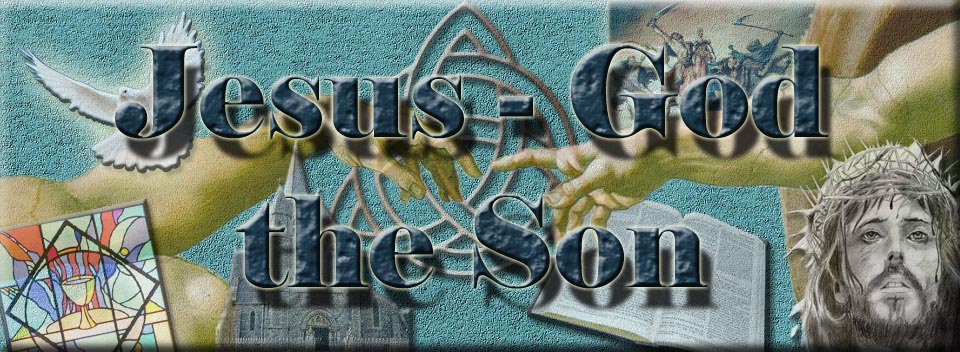
Does the Religion of Mithra Prove that Christianity is False?
|
Some critics of Christianity teach that the Christian religion was not based upon divine revelation but that it borrowed from pagan sources, Mithra being one of them. They assert that the figure of Mithra has many commonalities with Jesus, too common to be coincidence. Mithraism was one of the major religions of the Roman Empire which was derived from the ancient Persian god of light and wisdom. The cult of Mithraism was quite prominent in ancient Rome, especially among the military. Mithra was the god of war, battle, justice, faith, and contract. According to Mithraism, Mithra was called the son of God, was born of a virgin, had disciples, was crucified, rose from the dead on the third day, atoned for the sins of mankind, and returned to heaven. Therefore, the critics maintain that Christianity borrowed its concepts from the Mithra cult. But is this the case? Can it be demonstrated that Christianity borrowed from the cult of Mithra as it developed its theology? First of all, Christianity does not need any outside influence to derive any of its doctrines. All the doctrines of Christianity exists in the Old Testament where we can see the prophetic teachings of Jesus as the son of God (Zech. 12:10), born of a virgin (Isaiah 7:14), was crucified (Psalm 22), the blood atonement (Lev. 17:11), rose from the dead (Psalm 16:10), and salvation by faith (Hab. 2:4). Also, the writers of the gospels were eyewitnesses (or directed by eyewitnesses as were Mark and Luke) who accurately represented the life of Christ. So, what they did was write what Jesus taught as well as record the events of His life, death, and resurrection. In other words, they recorded history, actual events and had no need of fabrication or borrowing. There will undoubtedly be similarities in religious themes given the agrarian culture. Remember, an agriculturally based society, as was the people of the ancient Mediterranean area, will undoubtedly develop theological themes based upon observable events, i.e., the life, death, and seeming resurrection of life found in crops, in cattle, and in human life. It would only be natural for similar themes to unfold since they are observed in nature and since people created gods related to nature. But, any reading of the Old Testament results in observing the intrusion of God into Jewish history as is recorded in miracles and prophetic utterances. Add to that the incredible archaeological evidence verifying Old Testament cities and events and you have a document based on historical fact instead of mythical fabrication. Furthermore, it is from these Old Testament writings that the New Testament themes were developed. Following is a chart demonstrating some of the New Testament themes found in the Old Testament.
As you can see, there is no need for any of the Christian writers to borrow from anything other than the Old Testament source in order to establish any Christian doctrine concerning Jesus. If the argument that pagan mythologies predated Christian teachings and therefore Christianity borrowed from them is true, then it must also be truth that the pagan religions borrowed from the Jewish religion because it is older than they are! Given that all of the Christian themes are found in the Old Testament and the Old Testament was begun around 2000 B.C. and completed around 400 B.C., we can then conclude that these pagan religions actually borrowed from Jewish ideas found in the Old Testament. Think about it, the idea of a blood sacrifice and a covering for sin is found in the first three chapters of Genesis when God covered Adam and Eve with animals skins and prophesied the coming of the Messiah. Furthermore, those who wrote about Jesus in the New Testament were Jews (or under the instruction of Jews) who were devoted to the legitimacy and inspiration of the Old Testament scriptures and possessed a strong disdain for pagan religions. It would have been blasphemous for them to incorporate pagan sources into what they saw as the fulfillment of the sacred Old Testament scriptures concerning the Messiah. Also, since they were writing about Jesus, they were writing based upon what He taught: truth, love, honesty, integrity, etc. Why then would they lie and make up stories and suffer great persecution, hardships, ridicule, arrest, beatings, and death all for known lies and fabrications from paganism? It doesn't make sense. At best, Mithraism only had some common themes with Christianity (and Judaism) which were recorded in both the Old and New Testaments. What is far more probable is that as Mithraism developed, it started to adopt Christian concepts.
What is more probable is that with the explosive nature of the Christian church in the 1st and 2nd century, other cult groups started to adapt themselves to take advantage of some of the teachings found in Christianity.
Therefore, even though there are similarities between Christianity and Mithraism, it is up to the critics to prove that one borrowed from the other. But, considering that the writers of the New Testament were Jews who shunned pagan philosophies and that the Old Testament has all of the themes found in Christianity, it is far more probable that if any borrowing was done, it was done by the pagan religions that wanted to emulate the success of Christianity. 1. R. Nash, Christianity and the Hellenistic World" as quoted in Baker's Encyclopedia of Christian Apologetics, Norman Geisler; Baker Books, Grand Rapids, Mich.; 1999, p. 492. 2. Wilson, Bill, compiled by; The Best of Josh McDowell: A Ready Defense; Nashville, Tenn., Thomas Nelson Publishers; 1993, p. 167. |
-
Site Navigation
 Home
Home What's New
What's New Bible
Bible Photos
Photos Hiking
Hiking E-Books
E-Books Genealogy
Genealogy Profile
Free Plug-ins You May Need
Profile
Free Plug-ins You May Need
 Get Java
Get Java.png) Get Flash
Get Flash Get 7-Zip
Get 7-Zip Get Acrobat Reader
Get Acrobat Reader Get TheWORD
Get TheWORD